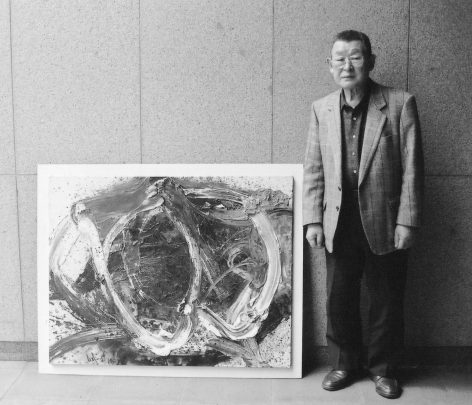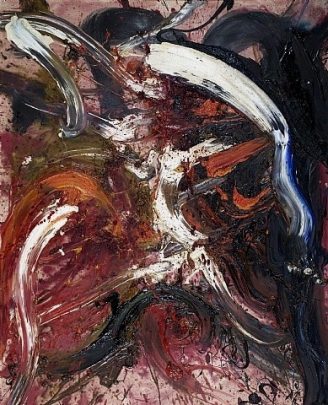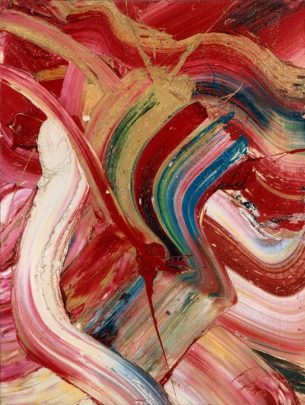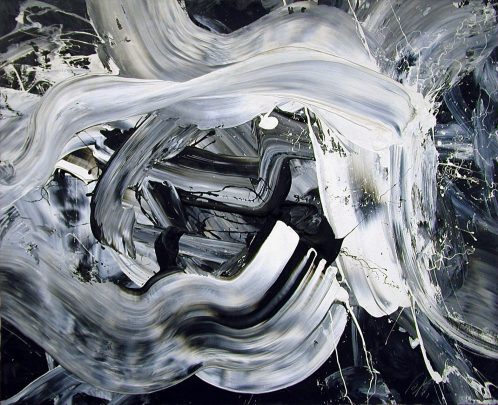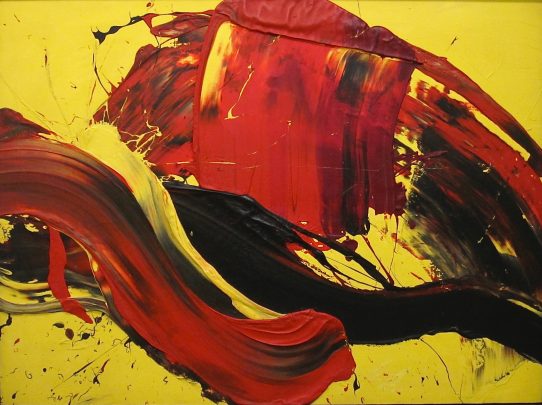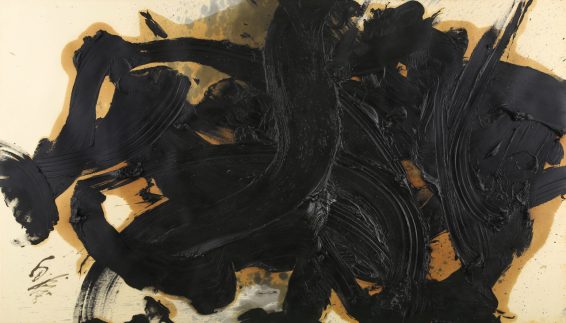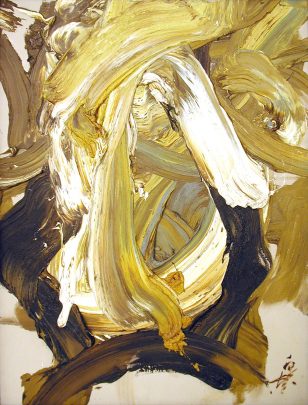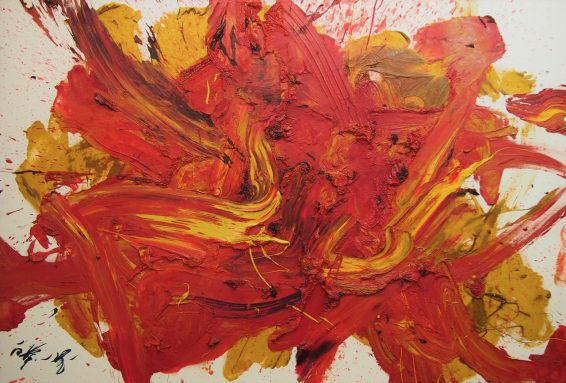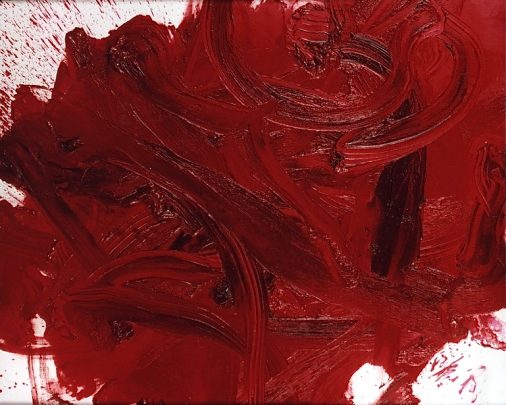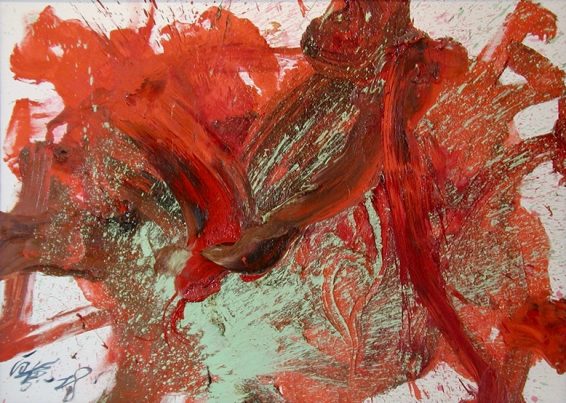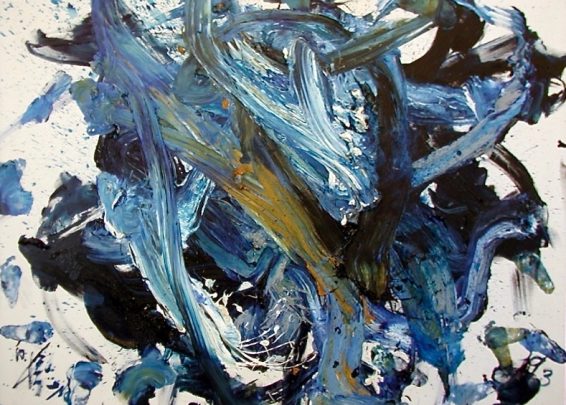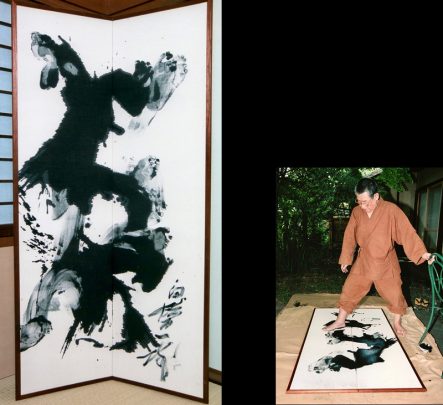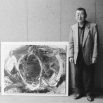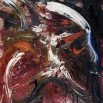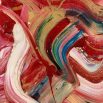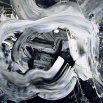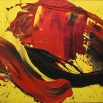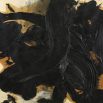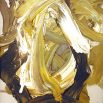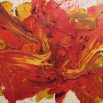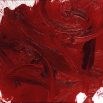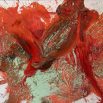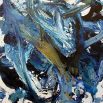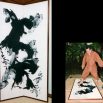白髪一雄 SHIRAGA Kazuo 1924–2008
- 聖獏 1962年 油彩・キャンバス 91x116.5cm 販売済み
Seibaku 1962 oil on canvas 91x116.5cm sold
* 1996年、白髪一雄氏が自作の調査確認のためにアート・遊訪問時に撮影。
* Picture took in 1996 on the occasion of Mr. Shuraga's visit to Art U for the examination of his works. - 聖狗 1963年 油彩・キャンバス 162x130.6cm 販売済み
Seiku 1963 oil on canvas 162x130.6cm sold - 輝ける色 1970年 油彩・キャンバス 130.3X97cm 販売済み
Kagayakeru Iro 1970 oil on canvas 130.3X97cm sold - 噴流 1973年 油彩・キャンバス 182x227cm 販売済み
Funryu 1973 oil on canvas 182x227cm sold - 竜樹賛 1975年 油彩・キャンバス 97x130cm 販売済み
Ryuju San 1975 oil on canvas 97x130cm sold - 波濤 1987年 油彩・墨・紙 112x194.5cm ポーラ美術振興財団蔵
Hato 1987 oil and ink on paper 112x194.5cm Collection of Pola Art Foundation - 風土記 1988年 油彩・キャンバス 145x100cm 販売済み
Fudoki 1988 oil on canvas 145x100cm sold - 紅浄火 1990年 油彩・キャンバス 128x194cm 販売済み
Koujyouka 1990 oil on canvas 128x194cm sold - 灼泥 1992年 油彩・キャンバス 130x162cm 販売済み
Shakudei 1992 oil on canvas 130x162cm sold - 加持力 1992年 油彩・キャンバス 130x194.5cm 販売済み
Kajiriki 1992 oil on canvas 130x194.5cm sold - 荒戸 1993年 油彩・キャンバス 182.5x260cm 販売済み
Arato 1993 oil on canvas 182.5x260cm sold - 湯布院 1997年 墨・布、二曲一双屏風 166.5x90cm 販売済み
Yufuin 1997 ink on cloth, mounted in two-panel screen 166.5x90cm sold
制作風景写真:藤野忠利
Documentary picture of the creation by Tadatoshi Fujino
1924年(大正13)、兵庫県尼崎市に生まれる。1942年(昭和17)、京都市立絵画専門学校日本画予科に入学。同校在籍時に 、「知的/情的」の二分類を試み た外山卯三郎の20世紀美術論に影響を受け、「情的」な流れの最先端を志す。同校卒業後に洋画に転向、大阪市立美術館付設美術研 究所に学ぶ。1952年(昭和27)、金山明、村上三郎らと「0(ゼロ)会」を結成。1954年(昭和29)に、足を使った初めての作品制作。同年に吉原治良の勧誘を受け、翌1955年 (昭和30)、具体美術協会に加入。1971年(昭和 46)、比叡山延暦寺にて得度。2008年(平成20年) に83歳で死去。
(大阪新美術館建設準備室ホームページより引用)
Born in Amagasaki, Hyogo Prefecture in 1924, died in 2008 at the age of 83.Shiraga enrolled in the Department of Japanese Painting at Kyoto City Art School in 1942. Influenced by Usaburo Toyama’s view of art classifying art into the two categories of “intelligent” and “emotional,” Shiraga decided to become a front runner in the “emotional” category. After graduation, he turned to Western- style painting and studied at the Osaka Municipal Institute of Art. In 1952, Shiraga formed the Zero- kai Group together with Akira Kanayama, Saburo Murakami, Atsuko Tanaka, among others. In 1954, he produced his first work painted with his feet and in the following year joined the Gutai Art Association with other Zero-kai members. Shiraga became a Buddhist priest at Enryakuji Temple on Mt. Hiei in 1971.
